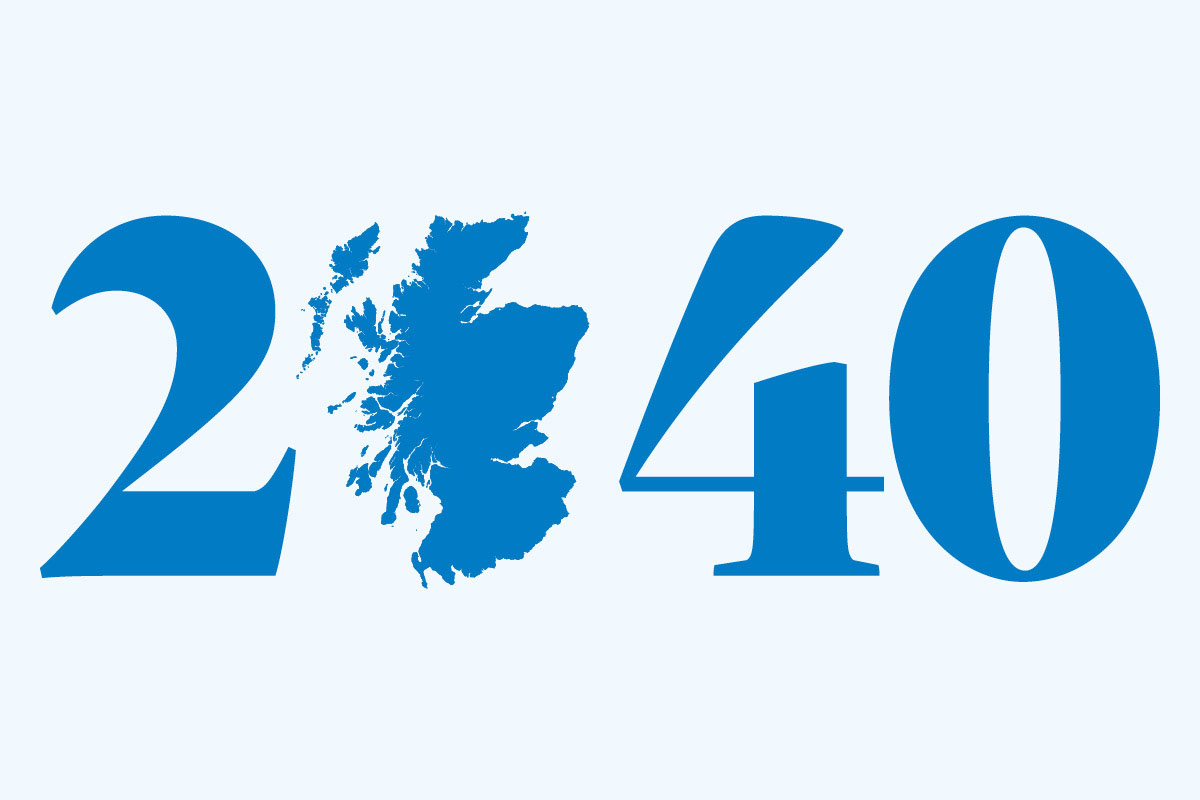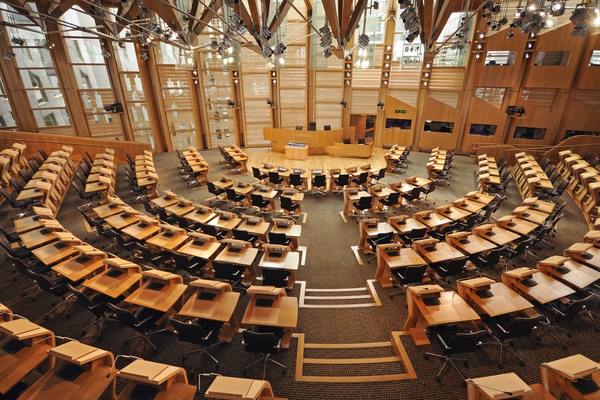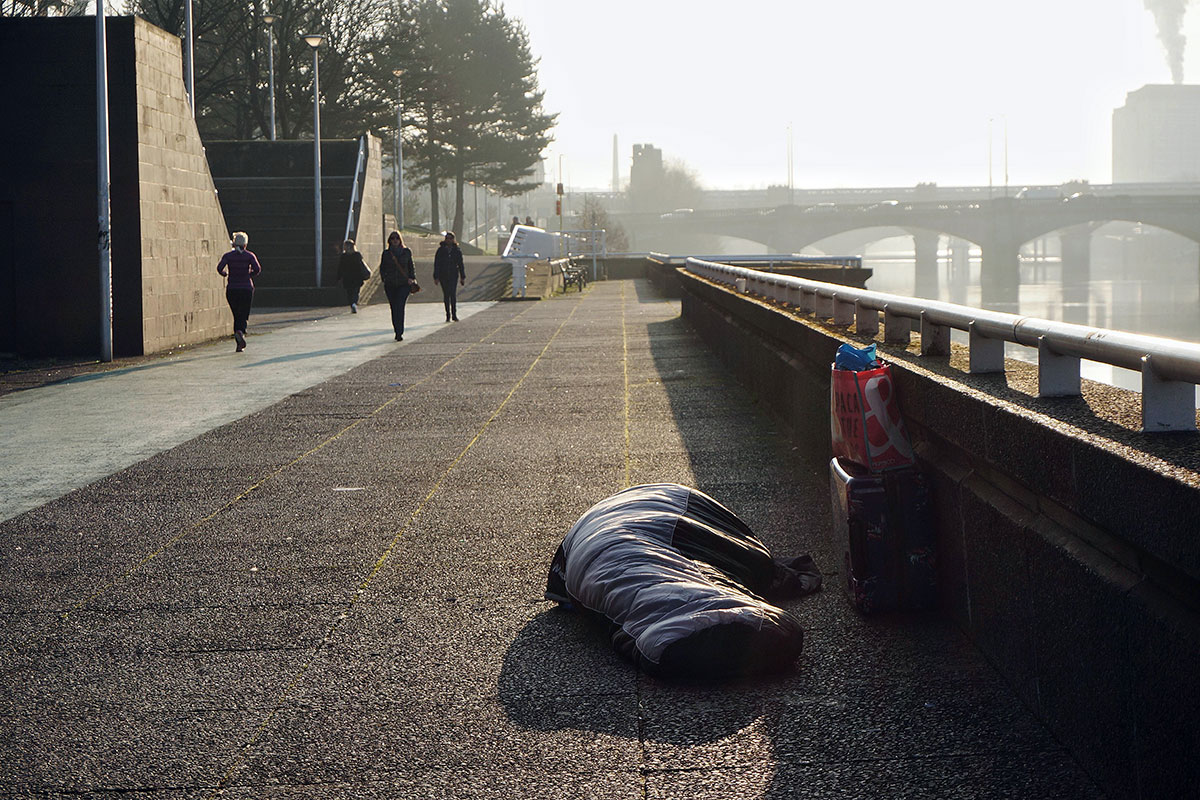Planning for Scotland’s future: what does the sector make of the Housing to 2040 consultation?
The Scottish government has made ambitious plans for housing over the next 20 years. Rhiannon Curry hears the sector’s views on what ministers want to achieve
Twenty years is a long time. In 2000, the housing sector was yet to encounter Help to Buy or Universal Credit, and Lakanal House and Grenfell Tower were simply residential buildings in London.
Scotland had just established its own government before the turn of the millennium, giving it more power over housing policy than ever before.
Scottish housing associations had enjoyed a recent boom, growing their stock to 131,000 homes, or 5.7% of the total, while council housing accounted for almost a quarter of the total housing stock across the country, or 583,000 homes.
In the intervening 20 years, much has changed. The proportion of homes owned by Scotland’s local authorities has dropped dramatically, to around 12%, as the Right to Buy stripped thousands of homes from the system and stock was transferred to housing associations.
Housing association stock now accounts for some 250,000 homes, around 10% of the total, and Glasgow-based Wheatley Group – which owns subsidiaries including Glasgow Housing Association and Dumfries and Galloway Housing Partnership – is by far the biggest social landlord in Scotland as well as the UK’s largest builder of social rented homes.
So how will this picture change 20 years on? This is the question the Scottish government is trying to answer. In December, it published its Housing to 2040 plan in an attempt to crystallise the sector’s ambitions – and its response to the challenges that will arise.
The Scottish government’s ambition appears to be simple: it says it believes housing has a vital role to play in achieving many of its aims for Scotland as a whole, including eradicating child poverty, homelessness and fuel poverty; tackling the effects of climate change; and promoting inclusive growth.
Having initially announced plans to set out its vision for housing until 2040 in its 2019/20 Programme for Government, it then asked for the sector’s input via a consultation, which closes today. Included in the consultation document is a list of principles intended to help the sector and government to meet housing need, which include creating a housing system that supplies high-quality affordable homes to live in, shifting the balance away from the use of homes as a means to store wealth, and encouraging people who both rent and own their homes to save for the future by encouraging housing stability.
“A lot of what they are saying is the right kind of thing but it’s lacking detail on how it will be delivered,” says Ashley Campbell, policy and practice manager at the Chartered Institute of Housing Scotland.
Gordon MacRae, assistant director of communications and policy at Shelter Scotland, agrees. “These are incredibly ambitious principles that they are setting out. The idea of homes, not wealth stores, and a sustainable housing market are to be welcomed,” he says. “But there is very little to disagree with because there is very little detail about how these principles will be delivered.”
The Scottish government also wants to encourage ‘tenure-neutral’ space and quality standards for new homes, and to ensure that all tenures have the same high quality, safety standards and levels of consumer protection.
Sally Thomas, chief executive of the Scottish Federation of Housing Associations (SFHA), says: “We recognise that the housing system is changing. If the government wants to provide a mix of tenures then social housing must be part of that. It cannot be seen as a tenure of last resort any longer, but seen on a level playing field.”
The consultation also majors on empowering local people to make decisions about housing in their area, building strong communities, and working to protect the environment in line with wider net-zero targets.
Finally, it sets out the principle that everyone is entitled to a home, envisaging a housing market that works with people’s needs. “We are encouraged by the rights-based language around housing,” says Mr MacRae.
But delivering these ambitions may be another matter.
In setting out the government’s plan, Aileen Campbell, cabinet secretary for communities and local government, said: “We face a number of challenges which mean that business as usual is not an option. We need to think open-mindedly about how to respond and I am clear that nothing is off the table.”
The challenges set out in the report are stark: Scotland faces a rapidly ageing population and increasing numbers of households, putting pressure on existing stock and the new build programme. Tackling homelessness is also a priority. According to Shelter Scotland, a household becomes homeless in Scotland every 18 minutes.
Ms Thomas thinks more could have been said in the consultation about the role housing has to play in eliminating wider social problems. “Fuel poverty is a massive issue for households, particularly those in rural areas,” she says. “We’ve got to be doing more than we’re currently doing to drive down poverty.”
For her, recognising the centrality of housing in tackling pervasive social inequality should be higher up the government’s agenda.
The SFHA is carrying out work to measure the social and economic impact of housing associations in Scotland, which Ms Thomas says will highlight the ongoing need for more homes, as well as make the case for government support.
A household becomes homeless in Scotland every 18 minutes, according to Shelter (picture: Alamy)
The consultation also highlights challenges facing the housing sector itself, which the government says could have a huge impact on the way that it functions.
“The Scottish government’s capital budget of over £827m for the Affordable Housing Supply Programme in 2019-20 represents 16% of the total capital budget,” the consultation paper says. “The current level of funding, however, will be difficult to sustain, especially considering the number of demographic, societal and fiscal challenges we face.”
This has raised red flags among housing sector professionals, many of whom fear a withdrawal of some of the grant funding that currently helps them to build homes and run services.
The consultation highlights priorities including delivering more homes across all tenures; adaptations of some existing homes to make them more accessible for people with disabilities and appropriate for an ageing population; delivering the Energy Efficient Scotland targets through retrofitting energy efficiency measures; and addressing the backlog of major improvements, maintenance and repairs to existing homes.
What is the Housing to 2040 consultation?
Holyrood, where the Scottish government is based (picture: Getty)
The Scottish government says its Housing to 2040 consultation is “designed to support a conversation about how we can together plan for what we want our homes and communities to look and feel like in 2040”.
It sets out a series of principles and a draft vision for what it wants to achieve in the next 20 years. These principles are:
- Principle one: The housing system should supply high-quality affordable homes for living in, to shift the balance away from the use of homes as a means to store wealth.
- Principle two: Government policy (including taxes and subsidies, for example) should promote house price stability, to help underpin Scotland’s standard of living and productivity and promote a ‘Fairer Scotland’.
- Principle three: Everybody should be able to save for the future (as well as be secure in their home and make significant changes to it), whether they rent or own.
- Principle four: Housing provision should be informed by whole-life economic costs and benefits in the round and help to address inequalities in health, wealth and education.
- Principle five: Tenure-neutral space and quality standards for new homes (and existing homes where possible) should be set specifically to improve and protect quality of living and of place.
- Principle six: Government policy should promote a greater diversity of home builders and broader availability of land for development to reduce prices and improve building quality.
- Principle seven: All tenures should apply the same high quality and safety standards and levels of consumer protection.
- Principle eight: New homes for sale should be built to high standards, defects should be identified and remedied quickly, and all owners should be required to maintain the condition of their home.
- Principle nine: Decisions around the quality, location and utilisation of existing stock and new build should be ambitious in enhancing biodiversity, promoting Scotland’s energy security, and be consistent with the target for Scotland’s emissions to be net zero carbon by 2045.
- Principle 10: New housing, and the required community resources, should only be provided where they help to create safer, stronger, attractive, sustainable and integrated communities.
- Principle 11: Local communities should be empowered to respond to housing need in their area, as part of a coherent regional economic approach (creating and maintaining jobs) and supported by provision of the right infrastructure.
- Principle 12: Government intervention should help existing and new communities to be physically, digitally, culturally and economically connected within a coherent geographic region; this includes retaining and attracting vibrant communities in areas facing depopulation.
- Principle 13: Government should ensure that there are affordable housing options across Scotland for households at all income levels.
- Principle 14: Housing and the housing market should be highly flexible to enable people to meet their changing needs.
- Principle 15: Everyone has a right to an adequate home.
The consultation closes on 28 February.
But none of this can happen without funding. “The fact that the Scottish government has said funding could be different in the future is a big concern for us,” Ms Campbell explains. “What the sector needs is continued investment and more financial certainty.”
This longer-term fiscal question mark is a problem. But for many, the issue is more immediate.
There has been unease for some time that the Scottish government would limit its funding from next year, once the current funding round ends. In October, Scottish housing minister Kevin Stewart called for patience from the sector while the government waited for the UK government’s next Budget statement before setting out its spending plans post-2021.
Ms Thomas says: “We’re completely on board with the government taking this long-term view. Historically, the UK has taken a very short-term view on housing. But we don’t want this to shift the view from the immediate need for funding from next year.”
Mr MacRae says he has already seen housing associations pulling back from development commitments and scaling back their apprenticeship programmes in anticipation of greater financial uncertainty. “2040 is a long time away and there’s a lot to be doing in the here and now,” he says.
He points out that the sector is on track to have a record year for housing delivery, with more than 50,000 affordable homes and 30,000 social homes being built. “To then turn the tap off would be to undermine all that progress and return us to the boom and bust – not just in the number of homes being built but also the capacity in Scotland to build them.”
Reducing public sector funding could force housing associations and councils to fund more development via private finance, which Mr MacRae warns could have a knock-on effect on rents.
“Only a long-term commitment [from the government] to social housing can ensure that issues such as child poverty aren’t exacerbated,” he adds.
The consultation says proposals from the sector for housing in the next 20 years need to be “resilient” against a number of “variables or ‘drivers of change’” including technology, the climate and the UK’s relationship with the EU, while also noting that “change may come faster or slower than forecast or be altogether different”.
It is an admission that really, no one can tell what the next 20 years might look like – and that may be the greatest challenge that Scottish housing providers face.
Sign up for our development and finance newsletter
Already have an account? Click here to manage your newsletters














